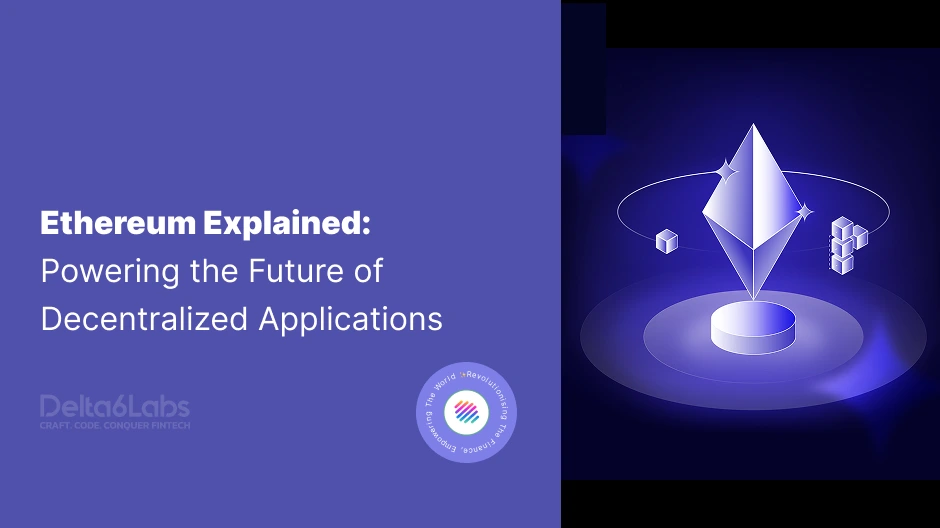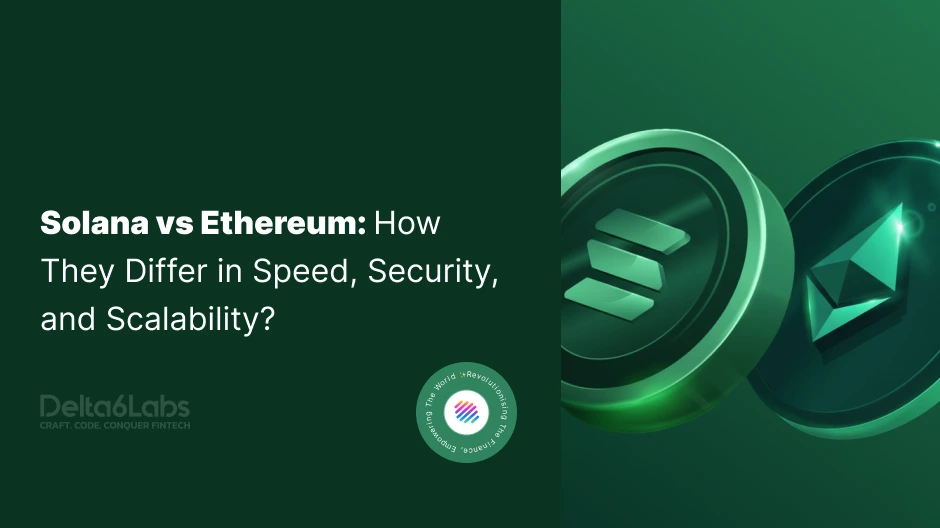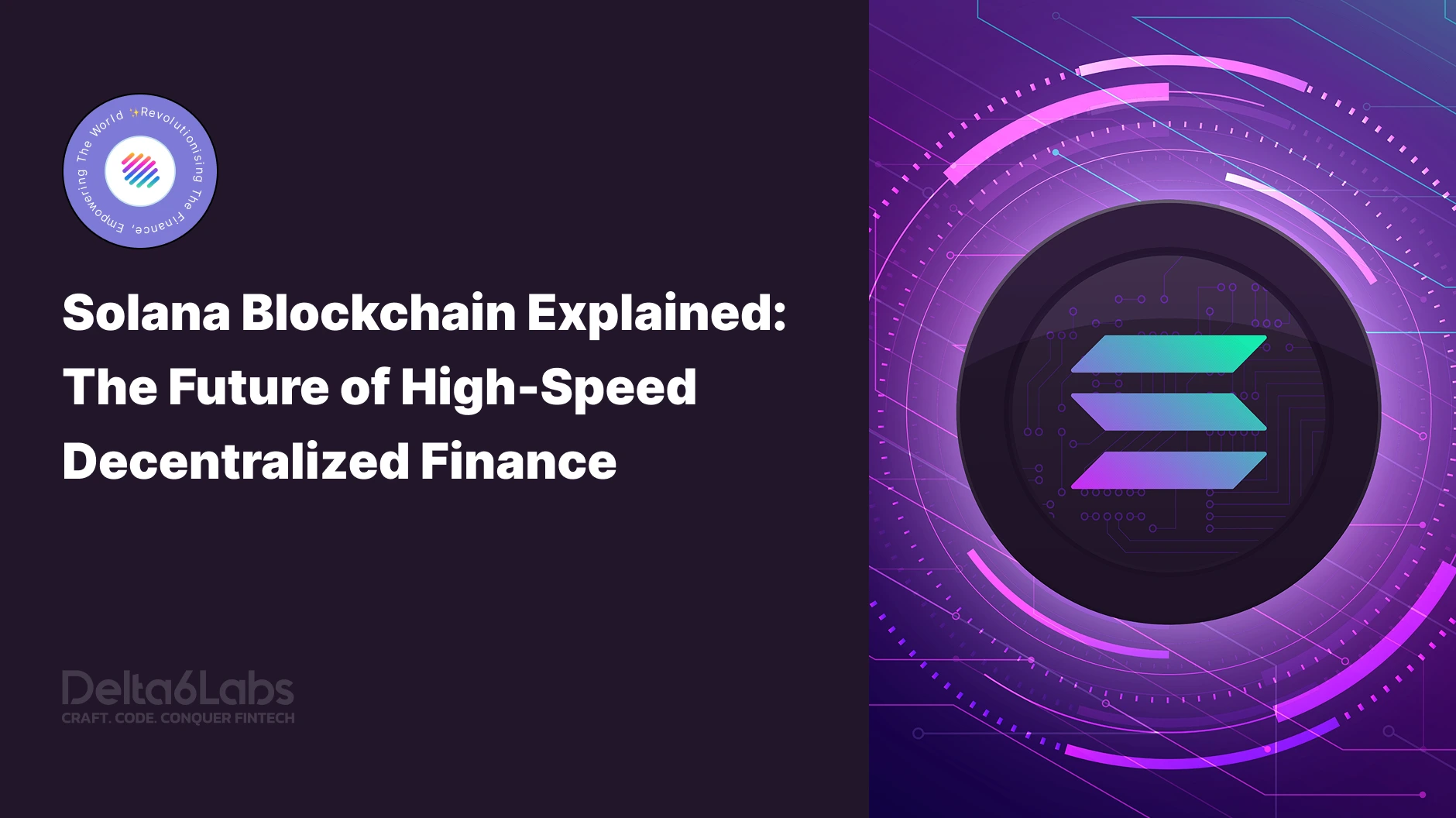Ethereum Explained: Powering the Future of Decentralized Applications
Table of Contents
This blog explores Ethereum in detail, its working, significance, benefits, challenges, real-world applications, and future outlook.
What is Ethereum?
Ethereum is a decentralized, open-source blockchain platform that allows developers to build and deploy applications using smart contracts. It runs on its native cryptocurrency called Ether (ETH), which is used for paying transaction fees (commonly known as “gas”) and securing the network. The revolutionary aspect of Ethereum is its ability to run smart contracts, self-executing pieces of code that automatically carry out agreements once conditions are met. This enables trustless interactions, eliminating the need for banks, brokers, or intermediaries.
The Ethereum Virtual Machine (EVM) is the core innovation that enables Ethereum to execute smart contracts. It ensures that the same code runs exactly as programmed across all nodes in the network, making Ethereum a trustless, global computer.
How Does Ethereum Work?
Ethereum works by combining blockchain technology with smart contracts:
Transactions and Gas Fees
Users perform actions on Ethereum, sending ETH, deploying contracts, or interacting with dApps, by paying gas fees. Gas ensures that network resources are used efficiently.
Smart Contracts
Smart contracts are automatically self-executing programs stored on the blockchain. They automatically enforce rules without intermediaries, making processes transparent and tamper-proof.
Ethereum Virtual Machine (EVM)
The EVM is a decentralized computing environment that executes smart contract code consistently across all nodes.
Consensus Mechanism
Ethereum initially used Proof of Work (PoW) but transitioned to Proof of Stake (PoS) through the Ethereum 2.0 (The Merge) upgrade. In PoS, validators replace miners, securing the network by staking ETH.
Blocks and Validation
Transactions are grouped into blocks, validated by stakers, and added to the chain, ensuring immutability and security.
Importance of Ethereum
Ethereum is highly significant because it has expanded blockchain’s utility beyond cryptocurrency, reasons included:
Smart Contracts Pioneering
Smart contract pioneering has introduced programmable contracts, revolutionizing finance, gaming, and digital ownership.
Foundation of DeFi
Ethereum powers most DeFi platforms, allowing decentralized lending, borrowing, and trading.
NFT Ecosystem
One of the most unique and popular aspect of the DeFi, Non-fungible tokens (NFTs), representing unique digital assets, were originated and grew on Ethereum.
Interoperability
ERC token standards (ERC-20, ERC-721, ERC-1155) created a standardized ecosystem for digital assets.
Innovation Catalyst
Ethereum has inspired several other smart contracts platform like Solana, Cardano, and Avalanche, and has worked as an innovation catalyst in the DeFi landscape.
Advantages of the Ethereum Blockchain
Here are the advantages of the Ethereum Blockchain:
Decentralization
Ethereum Operates without a central authority, reducing censorship risks.
Security
Strong cryptographic foundations and active validator network secure the blockchain.
Flexibility
Developers can build a wide range of applications using Solidity (Ethereum’s programming language).
First-mover Advantage
Largest developer community and dApp ecosystem.
Interoperability
Ethereum’s standards ensure compatibility across wallets, tokens, and dApps.
Global Adoption
Ethereum is recognized by enterprises, startups, and governments for blockchain integration.
Challenges of Ethereum
Despite its strengths, Ethereum faces challenges:
- High Gas Fees: During peak usage, fees can spike, limiting accessibility.
- Scalability Issues: Ethereum can handle only ~30 transactions per second, compared to Visa’s thousands.
- Network Congestion: Popular dApps often slow down the network.
- Competition: Other blockchains like Solana, Polkadot, and Binance Smart Chain offer faster, cheaper alternatives.
- Complexity for Users: New users may struggle with wallets, gas, and private key management.
Understanding Ethereum 2.0
Ethereum’s upgrade to Ethereum 2.0 addresses many of its challenges:
- The Transition (2022): Transition from PoW to PoS, reducing energy usage by 99%. Ethereum 2.0 uses the PoS consensus mechanism to address the high energy consumption of the PoW consensus mechanism. The transition happened because by a voting process within the Ethereum ecosystem.
- Sharding (Upcoming): Splits the blockchain into multiple shards, improving scalability.
- Layer-2 Solutions: Rollups (Optimistic and zk-Rollups) process transactions off-chain, lowering costs and increasing speed.
- Sustainability: Energy efficiency and reduced carbon footprint make Ethereum more eco-friendly.
Real-World Applications of Ethereum
Ethereum is the backbone of the Web3 ecosystem, powering thousands of applications across industries:
- Decentralized Finance (DeFi): Platforms like Uniswap, Aave, and Compound enable peer-to-peer trading, lending, and yield farming without intermediaries.
- Non-Fungible Tokens (NFTs): Ethereum hosts NFT marketplaces like OpenSea and Rarible, supporting digital art, collectibles, and in-game assets.
- Gaming and Metaverse: Games like Axie Infinity and metaverse platforms like Decentraland run on Ethereum.
- DAOs (Decentralized Autonomous Organizations): DAOs use Ethereum smart contracts for decentralized governance of communities and projects.
- Supply Chain Management: Enterprises use Ethereum for transparent supply tracking and verification.
- Identity and Authentication: Decentralized identity solutions ensure user-controlled credentials and data privacy.
Difference Between Ethereum and Bitcoin
While both are blockchain-based, they serve different purposes:
- Bitcoin – Primarily a store of value and digital currency.
- Ethereum – A programmable blockchain supporting smart contracts and dApps.
- Transaction Speed – Ethereum is faster (~15 seconds/block) compared to Bitcoin (~10 minutes/block).
- Use Cases – Bitcoin focuses on payments, while Ethereum powers finance, gaming, NFTs, and governance.
The Future of Ethereum
Ethereum continues to evolve, with several promising developments on the horizon:
Scalability Solutions
Ethereum 2.0 and Layer-2 rollups will enable Ethereum to handle thousands of TPS, making it competitive with traditional financial systems.
DeFi Expansion
Ethereum will remain the dominant platform for DeFi, with increasing institutional involvement.
NFT and Metaverse Growth
As NFTs expand beyond art into gaming, real estate, and entertainment, Ethereum will continue to be the hub.
Enterprise Adoption
Companies like Microsoft, JPMorgan, and Ernst & Young already experiment with Ethereum, and adoption is set to grow.
Ethereum as a Settlement Layer
In the long run, Ethereum may become the global settlement layer for multiple Layer-2 and Layer-3 blockchains, ensuring security and interoperability.
Final Words
Ethereum has redefined blockchain technology by transforming it from a financial ledger into a global platform for innovation. With its support for smart contracts, dApps, NFTs, and DeFi, Ethereum remains the leading force in Web3.
While it faces challenges like scalability and gas fees, the transition to Ethereum 2.0, coupled with Layer-2 advancements, ensures a promising future. From startups to enterprises, Ethereum continues to shape the next phase of the internet, decentralized, transparent, and user-owned.
For businesses looking to build on Ethereum, partnering with blockchain development experts like Delta6Labs can accelerate growth and innovation in this evolving space.
Frequently Asked Questions
Disclaimer:
The information on this blog is for knowledge purposes only. The content provided is subject to updates, completion, verification, and amendments, which may result in significant changes.
Nothing in this blog is intended to serve as legal, tax, securities, or investment advice of any investment or a solicitation for any product or service.




